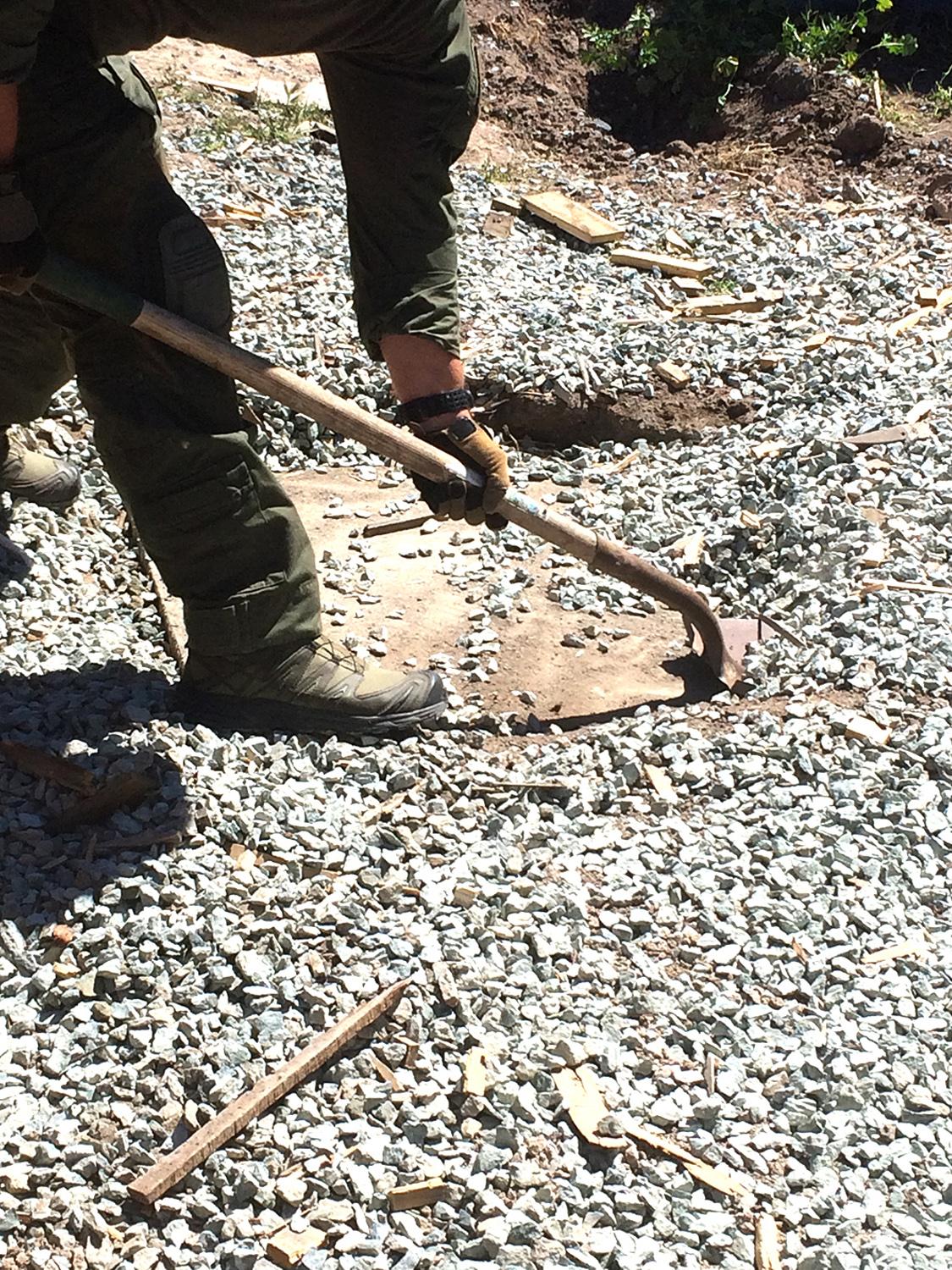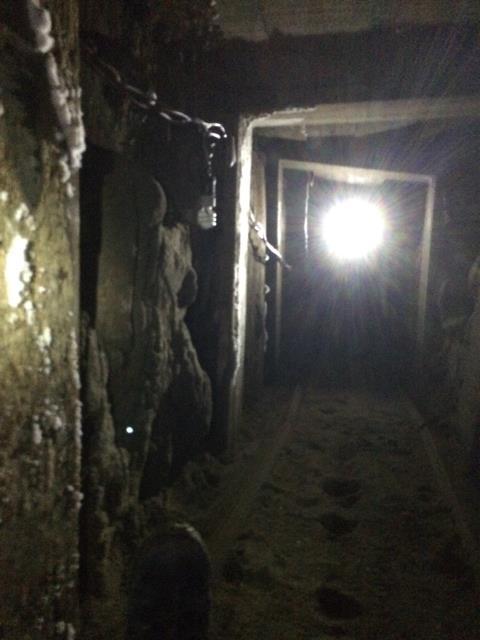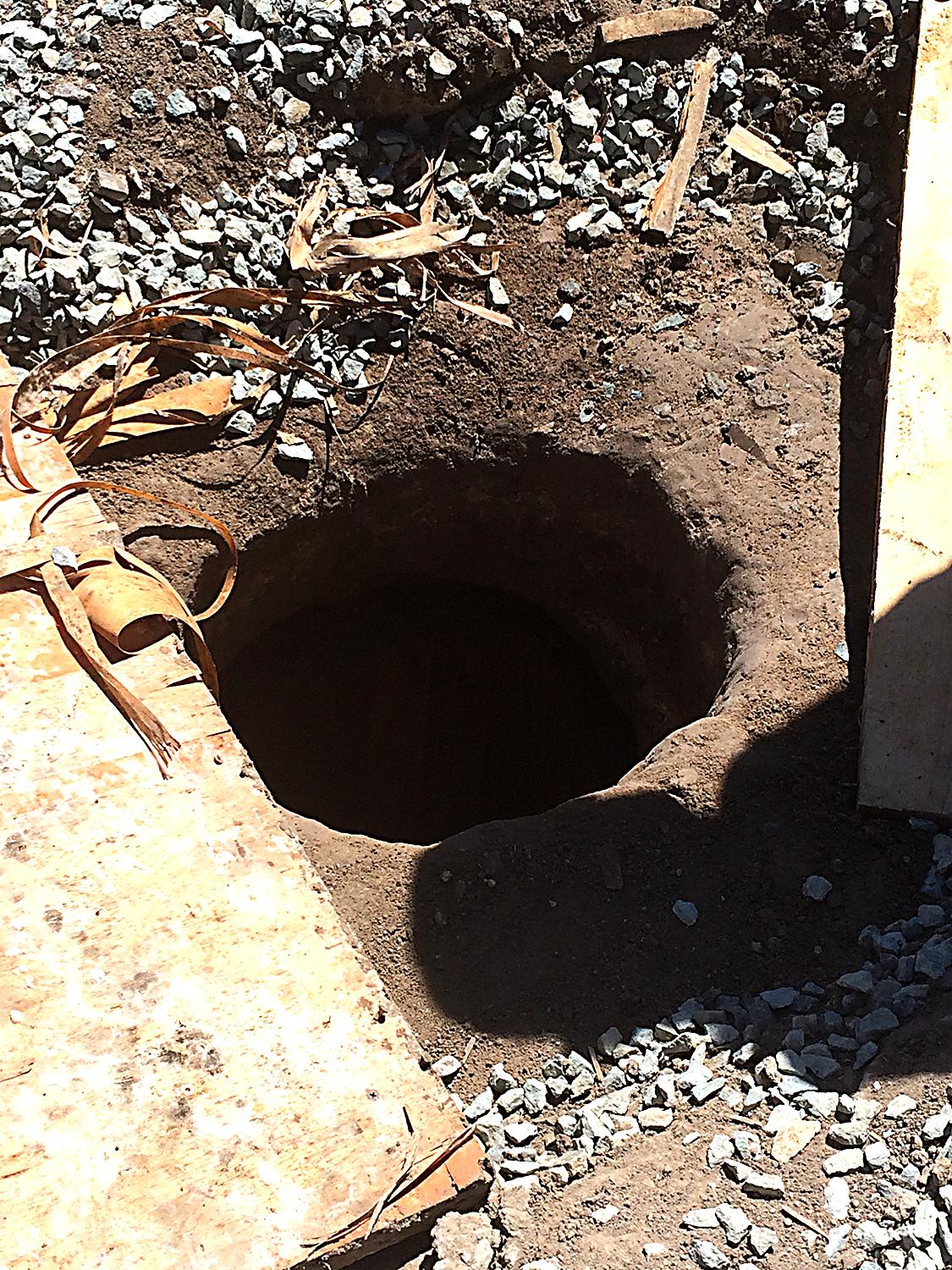Archived Content
In an effort to keep ICE.gov current, the archive contains content from a previous administration or is otherwise outdated. This information is archived and not reflective of current practice.
Feds dismantle one of longest underground tunnels ever found along California border
SAN DIEGO — Federal officials Wednesday announced the results of an investigation that led to the discovery of what is believed to be one of California’s longest cross-border tunnels and the seizure of a record quantity of cocaine thought to have been smuggled through that underground passage.
The tunnel, estimated to be more than 800 yards in length, stretches from a house in Tijuana, Mexico, to a fenced commercial lot in the Otay Mesa area, about 500 yards north of the international border. The tunnel’s exit on the U.S. side is a 3-foot hole that at one point was covered by an industrial-sized dumpster. The passageway is equipped with rail and ventilation systems, lights, and a sophisticated elevator that leads from the tunnel into a closet inside the Tijuana residence.
Six people were arrested in San Diego Friday and charged by federal complaint with various drug trafficking and tunnel-related charges, including conspiracy to import and distribute cocaine and conspiracy to use a border tunnel. The defendants include Martiniano Garcia-Sedano; Cruz Armando Parra Corrales; Alejandro Bravo; Juan Carlos Chavez Fabian; Alejandro Gomez-Baez; and Osmel Martinez. They were arraigned in federal court and remain in custody pending detention hearings.
“On the surface, few would ever suspect that traffickers were moving multi-ton quantities of cocaine and marijuana worth tens of millions of dollars in such an unassuming way, through this rabbit hole in the ground, in full view of the world around it,” said U.S. Attorney Laura Duffy. “However, we can thank the hyper-vigilant agents who work this area for seeing what many of us would have missed. They don't judge a book by its cover. Whether a grandiose super tunnel or a humble rabbit hole, they home in and are prepared to take whatever action is necessary to secure our border.”
On April 12, agents saw a white commercial truck deliver a large dumpster to a lot in Otay Mesa on Marconi Drive and Enrico Fermi Drive. The agents watched the truck back up and, with direction from some of the defendants, drop the dumpster over the area where the hole that served as the tunnel’s U.S. entrance was later found.
The next day, federal agents saw two people cover the dumpster with a tarp. Ten minutes later, a forklift removed stacks of wooden pallets from in front of the dumpster. Agents watched as defendant Cruz Armando Parra Corrales got down on the ground on his stomach with his face close to the bottom of the dumpster, apparently communicating with someone inside the dumpster or inside a tunnel beneath the dumpster.
A short time later, the truck loaded up the dumpster and transported it to another parking lot on Imperial Avenue near 30th Street, where it was unloaded. A second large box truck backed up next to the dumpster with its cargo door open. Agents conducting surveillance watched as the defendants placed a tarp between the dumpster and box truck, and then moved back and forth between them. A couple of hours later, the box truck drove out of the parking lot. San Diego County sheriff’s deputies stopped the truck and discovered 2,242 pounds of cocaine and 11,030 pounds of marijuana inside.
Subsequently, federal agents obtained warrants to search the industrial lot where they confirmed the tunnel’s U.S. exit. Inside the passageway, they discovered 68 bales of marijuana weighing more than 1,600 pounds. The exit was found at the exact location where agents had previously observed the defendants unload the dumpster from the roll-off truck. Agents also found an additional 1,430 pounds of marijuana in the dumpster. All told, authorities seized 2,242 pounds of cocaine and more than 14,000 pounds of marijuana.
“We know that drug trafficking organizations are using any and all means to get their contraband across the US/Mexican Border,” said DEA San Diego Special Agent in Charge William R. Sherman. “Historically, seizures from drug tunnels have been marijuana and small amounts of cocaine. A 2,000 pound cocaine seizure tells DEA and our law enforcement partners that these groups are having to resort to unsophisticated tunnels to try and push through what amounts to a $22 million loss just in cocaine alone. This loss is a devastating blow even to an established drug trafficking organization.”
“Because of the collaboration of the agencies involved in this investigation, a serious blow was dealt to the criminal organization responsible for this threat,” said Chief Patrol Agent Richard A. Barlow, U.S. Border Patrol, San Diego Sector. “I applaud the men and women who worked tirelessly to stop the flow of dangerous narcotics through this tunnel and thank them for their continued efforts to protect the citizens we serve.”
“This case is a strong reminder of the vulnerabilities that exist along the Southwest border,” said Hunter Davis, director of Air Operations for U.S. Customs and Border Protection, Air and Marine Operations, “Drug trafficking organizations continue to jeopardize our National Security in exchange for profit.”
The tunnel dismantled in Otay Mesa is the 13th large-scale operational smuggling tunnel discovered along the California border since 2006. In the last five years, federal authorities have detected more than 75 cross-border smuggling tunnels, most of them in California and Arizona.






